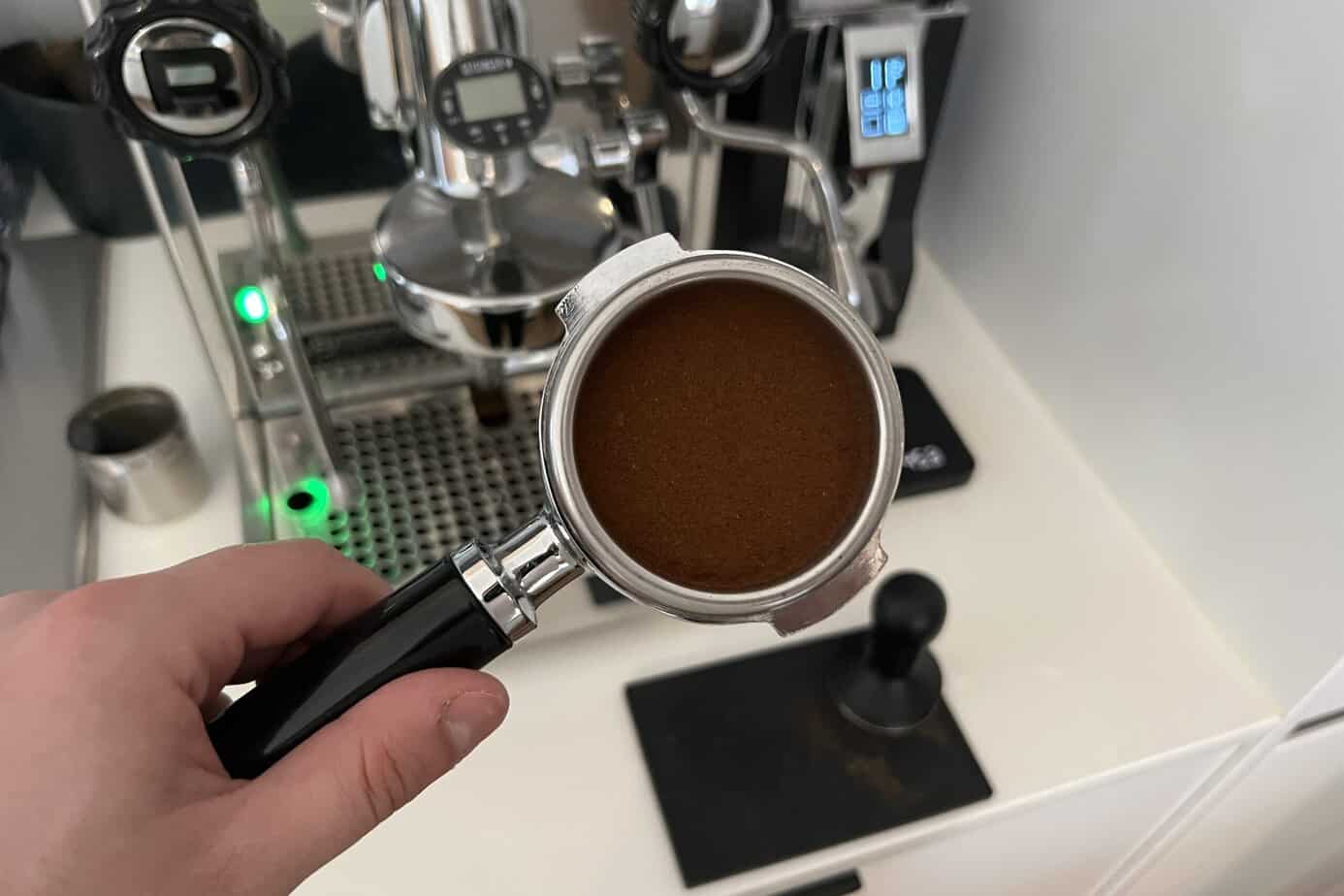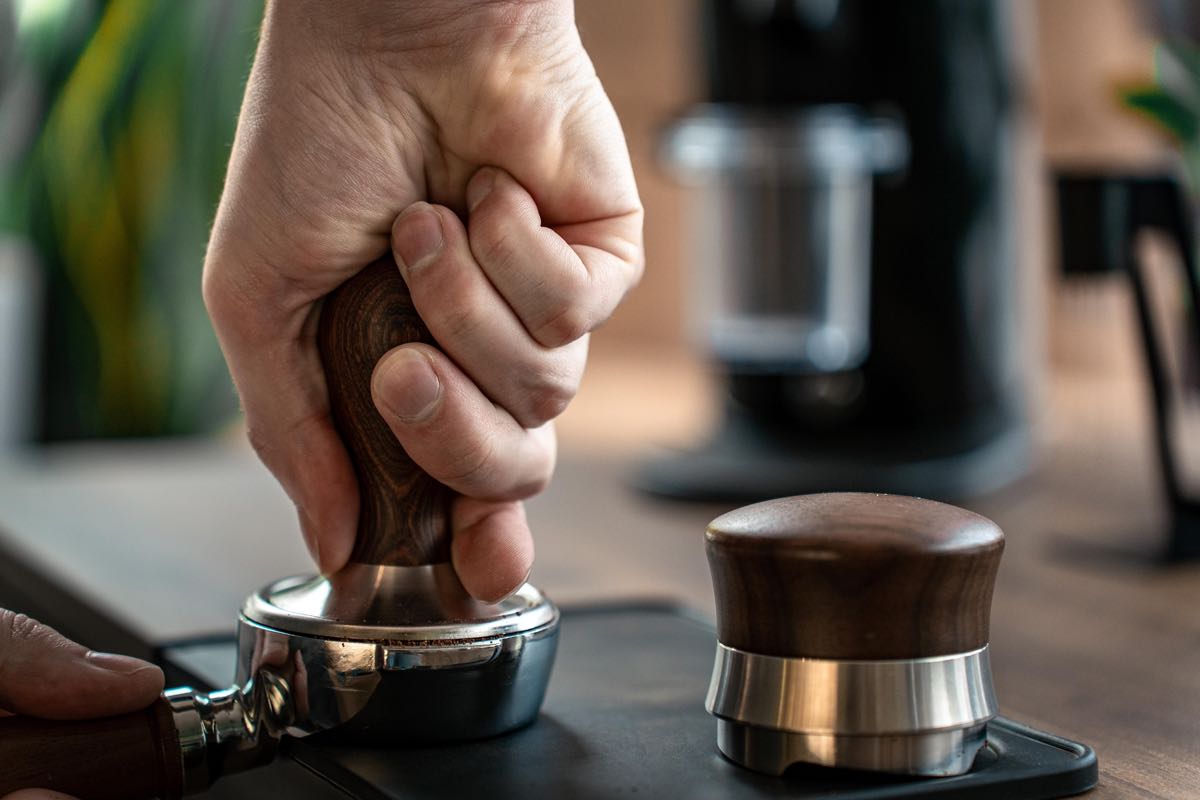When I first decided to make espresso at home, I was excited but also overwhelmed. I remember my first attempt vividly: I pressed the tamper down as hard as I could, thinking that more pressure must be better. The result? A bitter, over-extracted shot that tasted nothing like the smooth espresso I’d hoped for. Over time, I learned that tamping was less about brute force and more about consistency and technique. If you’re like me, just starting out or looking to perfect your espresso game, understanding the right tamping pressure can make all the difference.

Why Tamping Matters
Tamping compacts the coffee grounds to create an even, solid layer for water to pass through during extraction. The goal is to remove air pockets, which can lead to "channeling," where water finds the path of least resistance through the grounds, causing an inconsistent and weak espresso shot.
Proper tamping ensures even water flow, which extracts the full flavor from the coffee. Without tamping, the water would pass through too quickly, leading to under-extraction and resulting in a sour, thin espresso.
How Much Pressure Should You Apply?
Many espresso guides recommend applying around 30 pounds (13.6 kg) of pressure when tamping. However, for home baristas, the exact weight is less important than ensuring consistency and evenness in your tamping technique.
The key is to press firmly until the coffee grounds stop moving or compressing under the tamper. Once the grounds are compressed and firm, you’ve applied enough pressure. Pressing harder after this point won’t enhance extraction and may cause over-extraction, leading to bitter flavors.
Rather than fixating on a specific number of pounds, focus on keeping the tamper level and applying steady pressure across the coffee bed. Once the coffee is compressed evenly, you’re ready to brew.
Steps for Consistent Tamping
Follow these steps for consistent tamping every time:
Level the Coffee Grounds
Before tamping, ensure the coffee grounds are evenly distributed in the portafilter. Uneven grounds result in an inconsistent tamp, leading to channeling. You can tap the portafilter lightly or use a coffee distribution tool to level the grounds.
Proper Tamper Grip
Hold the tamper with your wrist straight and your elbow forming a 90-degree angle. This posture helps you apply even pressure without straining. Place three fingers around the handle while your thumb and index finger guide the tamper, ensuring it stays level with the portafilter.
Apply Steady Pressure
Press the tamper into the coffee grounds until they stop compressing. This is known as “tamping until resistance.” Once the coffee bed is fully compressed, avoid pressing harder—over-tamping can hinder extraction and produce bitter results.
Don’t Overthink Pressure
While 30 pounds of pressure is often suggested, the priority is consistency. Focus on applying the same amount of pressure each time rather than obsessing over exact measurements. Consistency is key for pulling great shots.
Use a Tamping Mat or Stable Surface
A tamping mat provides a solid, level surface and protects your countertop. It also helps stabilize the portafilter, making it easier to tamp evenly.
Common Tamping Mistakes
Avoid these common mistakes:
Uneven Tamping
If the tamper isn’t level, the water will flow unevenly, leading to under-extraction on one side and over-extraction on the other. Always aim to keep the tamper perfectly level when compressing the grounds.
Tamping Too Hard or Too Light
Too much pressure can lead to over-extraction and bitterness, while too little will result in a weak, under-extracted shot. Remember, tamp until the grounds are firm and stop compressing—anything beyond that won’t improve your espresso.
Skipping Ground Distribution
Not distributing the grounds properly before tamping can cause channeling. Always spread the coffee evenly before tamping, whether by lightly tapping the portafilter or using a distribution tool.
Tools to Improve Tamping Consistency
For home baristas looking to refine their technique, there are tools like coffee distribution tools or WDT (Weiss Distribution Technique) tools that help spread the grounds evenly before tamping. These tools can reduce channeling and improve extraction consistency, especially when working with clumpier coffee grounds.
For more precision, you might consider tampers with pressure sensors, which help ensure consistent tamping pressure with every shot—useful for beginners aiming for uniformity. These tampers can take away the guesswork, letting you focus on other elements of espresso preparation.
Practicing Your Tamping Technique
Perfecting your tamping technique comes down to practice and muscle memory. Don’t be discouraged if your first shots aren’t perfect—every barista, even the professionals, started somewhere. Practice applying consistent pressure and keeping the tamper level each time. Over time, you’ll develop an intuitive feel for when the grounds are properly compressed.
Experimenting with Tamping Pressure
If you’re feeling adventurous, you can experiment with slight variations in tamping pressure to see how it affects your espresso. Some coffee beans might yield a sweeter shot with slightly less pressure, while others might benefit from a firmer tamp. The beauty of making espresso at home is that you get to explore what works best for your taste buds.

Conclusion: Consistency is Key
Tamping isn’t about applying an exact amount of force but about achieving an even, compressed coffee bed every time. By focusing on consistent pressure and proper ground distribution, you can pull great espresso shots at home. Practice makes perfect, and the more you tamp, the better you’ll get at sensing when the coffee is perfectly compressed.
So don’t worry too much about the numbers—just enjoy the process, practice regularly, and you’ll be making delicious espresso in no time!
FAQs
Q: How hard should I tamp my espresso?
A: Aim to press firmly until the coffee grounds are compressed and stop moving. Many recommend around 30 pounds of pressure, but consistency and even tamping are more important than the exact force.
Q: Can I over-tamp my espresso?
A: Yes, over-tamping can lead to over-extraction, resulting in a bitter taste. Once the grounds are compressed, pressing harder won’t improve your espresso and might cause more harm than good.
Q: What happens if I tamp unevenly?
A: Uneven tamping can cause water to flow through the coffee unevenly, leading to channeling. This results in some parts of the coffee being under-extracted and others over-extracted, giving an inconsistent flavor.
Q: Do I need a tamping mat?
A: A tamping mat isn’t strictly necessary, but it provides stability and protects your countertop, making it easier to achieve a consistent tamp.
Q: Should I invest in a tamper with a pressure sensor?
A: If you’re new to espresso or struggle with consistency, a tamper with a pressure sensor can be helpful. It ensures you apply the same pressure each time, leading to more consistent shots, especially in the learning phase.
